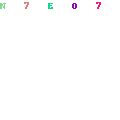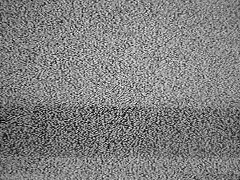

Tuesday, March 15, 2011
Street of Crocodiles (1987)
 Street of Crocodiles is a 21-minute-long stop-motion animation short subject directed and produced by the Brothers Quay and released in 1986.
Street of Crocodiles is a 21-minute-long stop-motion animation short subject directed and produced by the Brothers Quay and released in 1986.The Street of Crocodiles was originally a short novel written by Bruno Schulz, from a story collection published under that title in English translation. Rather than literally representing the childhood memoirs of Schulz, the animators used the story's mood and psychological undertones as inspiration for their own creation.
A man closes up a lecture hall; he reaches into a box and snips the string holding a gaunt puppet. Released, the puppet warily explores the darkened rooms about him. The desolate ambiance and haunting musical score convey a sense of isolation and futility, forcing the viewer into immediate identification with the mute protagonist as he explores a realm of mechanical realities and manufactured pleasures. As the protagonist tries to conform, or is forced into assimilation, the film slowly reveals how unfulfilling the surroundings actually are. Life and vitality are gradually stripped away to reveal the passionless cycle of existence.
Although heavily metaphorical, the piece also exemplifies the experimental and curious nature of the Quays' work. Rather than examining the potential symbolism of such props as screws, dust, string, and wind-up monkeys, many shots seem to focus on the movements and inherent characteristics of the materials. Like most of their films, the Brothers Quay employ a more musically-grounded structure in place of a straight-forward literal narrative in Street of Crocodiles.
Download links: 1 2 3
Friday, March 11, 2011
Dym (2007) Aka Smoke
 Grzegorz Cisiecki’s 2007 short film DYM is a surreal, ambiguous 7 minutes of experimental and ambitious cinematography. Interpret as you will, with no dialogue to help us along, it is left to our own imagination to decipher. Flitting from one beautiful scene to the next, there is no doubt huge talent behind DYM. With a startling musical score and superb lighting, this short is a masterpiece of creativity.
Grzegorz Cisiecki’s 2007 short film DYM is a surreal, ambiguous 7 minutes of experimental and ambitious cinematography. Interpret as you will, with no dialogue to help us along, it is left to our own imagination to decipher. Flitting from one beautiful scene to the next, there is no doubt huge talent behind DYM. With a startling musical score and superb lighting, this short is a masterpiece of creativity.The story of the person who became the captive of surrealistic madness.
Film by Grzegorz Cisiecki
Photography: Dawid Rymar
Editing: Cecylia Pacura, Grzegorz Cisiecki
Original score: Rashid Brocca, Aleksandr Poroch
Cast: Marta Szumiel, Grzegorz Golaszewski, Oriana Soika, Bartlomej Nowosielski
PWSFTViT, Poland, 2008

Sunday, March 6, 2011
Pink Floyd - More (1969)

Soundtrack from the Film More is the first full-length soundtrack album by the English rock band Pink Floyd, released on 27 July 1969. The film More was made in Luxembourg in 1969 and was directed by Barbet Schroeder. In it, two songs can be heard that were not included on the album: "Seabirds", and "Hollywood". The album actually comprises the other music used in the film, sometimes in a completely different form.[citation needed]
The original American edition shortened the title to just More. This was the last of three Pink Floyd albums to be released in the United States by the Tower Records division of Capitol Records. The 1973 US re-issue was released on Harvest Records. Although the CD edition restores the original United Kingdom title in all countries, it is represented differently on the spine (Music from the Film More) and label (Soundtrack to the Film More).
More contains some acoustic folk ballads, a genre that appeared sparsely on later works. It also contains a couple of hard rock songs ("The Nile Song", "Ibiza Bar"), as well as several instrumental tracks, featuring their experimental (or avant-garde) approach.
This is Pink Floyd's first full album without founding member Syd Barrett, who was ousted from the group in early 1968 during the recording of their previous album, A Saucerful of Secrets. It is also the first album to be produced by Pink Floyd without assistance from Norman Smith and was recorded at Pye Studios, Marble Arch, London and engineered by Brian Humphries.
Artist: Pink Floyd
Title Of Album: More
Year Of Release: 1969 /1987, 1st U.K. issue/
Label: EMI
Genre: Progressive Rock | Psychedelic rock
Format: FLAC (image+.cue+.log+Covers)
Quality: Lossless
Total Time: 45:01 min
Total Size: 214 mb
Tracklist
---------
01. Cirrus Minor
02. The Nile Song
03. Crying Song
04. Up The Khyber
05. Green Is The Colour
06. Cymbaline
07. Party Sequence
08. Main Theme
09. Ibiza Bar
10. More Blues
11. Quicksilver
12. A Spanish Piece
13. Dramatic Theme
download or download
More (1969)
 More is an english language film directed by Barbet Schroeder, released in 1969. Starring Mimsy Farmer and Klaus Grünberg, it deals with heroin addiction on the island of Ibiza. It features a soundtrack written and performed by Pink Floyd, released as the album Soundtrack from the Film More.
More is an english language film directed by Barbet Schroeder, released in 1969. Starring Mimsy Farmer and Klaus Grünberg, it deals with heroin addiction on the island of Ibiza. It features a soundtrack written and performed by Pink Floyd, released as the album Soundtrack from the Film More.A German student, Stefan, who has finished his studies, decides to have an adventure, get out of his conservative skin and to burn his bridges. After hitch-hiking to Paris, he commits burglary to get money and meets a free-spirited American girl, Estelle, following her to Ibiza. He discovers she is in trouble with a man named Dr. Wolf. Stefan saves Estelle from Dr. Wolf only to find she does not really want to be saved, and she introduces him to heroin (referred to by the old street name, "horse") which she has stolen from Dr. Wolf. The inevitable spiral into drug abuse and denial leads him down a dark road.
This story is modeled on the myth of Daedalus and Icarus with Estelle as the Sun.
The French film Censorship Board in 1969 insisted that some of the dialog be censored around the 81 minute mark before the film could be released. In the film, as the couple mix up a hallucinogenic concoction in the kitchen, the ingredients "benzedrine" and "banana peel" are deleted from the audio track. On the DVD, the words have been re-added as subtitles.
Most of the movie was shot on the island of Ibiza. The castle of Ibiza, which dominates the harbour and the town, is the scene for the final act. The location of Stefan's death, a tunnel near the castle, has since become a place of pilgrimage for addicts.
DOWNLOAD
Thursday, March 3, 2011
Ballet mécanique (1924)
 Ballet Mécanique was a project by the American composer George Antheil and the filmmaker/artist Fernand Léger. Although the film was intended to use Antheil's score as a soundtrack, the two parts were not brought together until the 1990s. As a composition, Ballet Mécanique is Antheil's best known and most enduring work. It remains famous for its radical style and instrumentation as well as its storied history.
Ballet Mécanique was a project by the American composer George Antheil and the filmmaker/artist Fernand Léger. Although the film was intended to use Antheil's score as a soundtrack, the two parts were not brought together until the 1990s. As a composition, Ballet Mécanique is Antheil's best known and most enduring work. It remains famous for its radical style and instrumentation as well as its storied history.In concert performance, the "ballet" is not a show of human dancers but of mechanical instruments. Among these, player pianos, airplane propellers, and electric bells stand prominently onstage, moving as machines do, and providing the visual side of the ballet. As the bizarre instrumentation may suggest, this was no ordinary piece of music. It was loud and percussive –- a medley of noises, much as the Italian Futurists envisioned new music of the 20th century. To explore a fascinating artifact of modernist music like Ballet Mécanique, it is worth understanding its history and also its musical qualities.
In its original release, the film's French title was "Charlot présente le ballet mécanique" (as seen on the original print), referring to showman André Charlot, who financed this film's French distribution. In France, Charlie Chaplin's Little Tramp character was also known as Charlot; the combination of the producer's name and Chaplin's screen image, represented by a Cubist-style paper puppet, is only the first of many visual puns in the film -- a seeming display of the film's sheer visual modernity, as intended by its creators from the get-go.
Download links: Part 1 Part 2 or watch

Rabbit's Moon (1950)
 Rabbit’s Moon is an avant-garde short film created by American filmmaker Kenneth Anger. Originally filmed in 1950, Anger only finished and released it in 1972, before re-releasing it in a second edition with a new soundtrack and other alterations in 1979.
Rabbit’s Moon is an avant-garde short film created by American filmmaker Kenneth Anger. Originally filmed in 1950, Anger only finished and released it in 1972, before re-releasing it in a second edition with a new soundtrack and other alterations in 1979.Filmed under a blue filter and set within a wooded glade during the night, the plot revolves around a clown, Pierrot, who longs for the moon, in which lives a rabbit (a concept found in both Japanese and Aztec mythology) and his futile attempts to jump up and catch it. Subsequently another clown, Harlequin appears, and teases Pierrot, showing him Columbina, with whom he appears to fall in love.
The 1972 version features a soundtrack made up of a series of pop songs; "There’s A Moon Out Tonight" by The Capris, "Oh, What a Night" by The Dells, "Bye Bye Baby" by Mary Wells, "I Only Have Eyes For You" by The Flamingos and "Tears On My Pillow" by The El Dorados. The 1979 version, which is speeded up, instead features the song "It Came in the Night" by the band A Raincoat played on a loop.
The movie is credited by the electronic music act Rabbit in the Moon as the inspiration for their name.
Download links: Part 1 Part 2

Subscribe to:
Comments (Atom)










